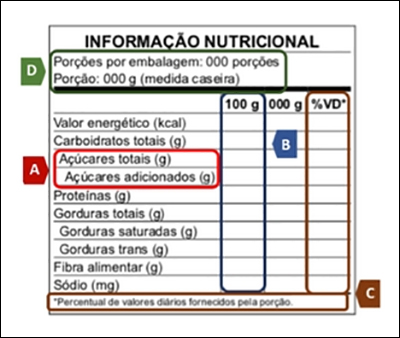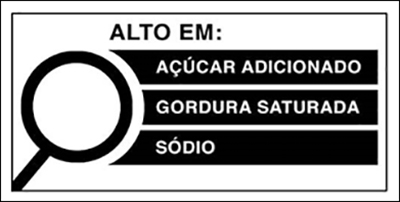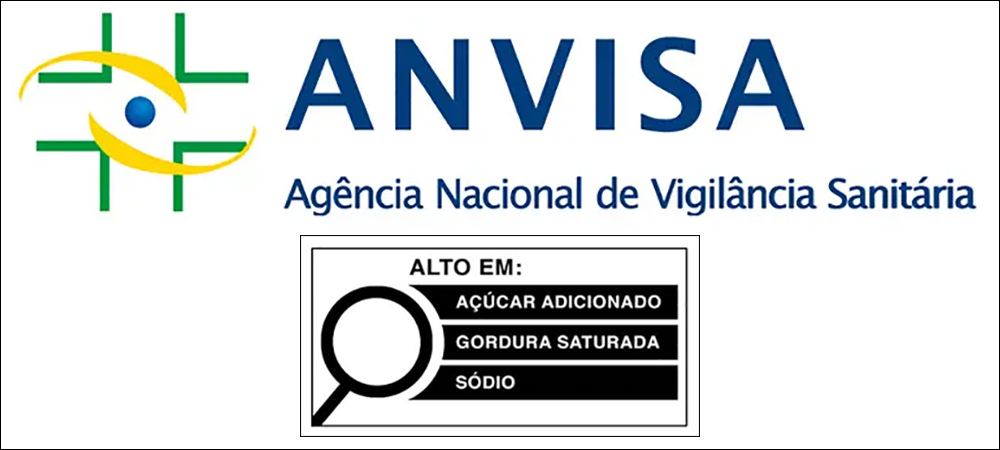Ed. Note: This article was previously posted at IoP Journal.
New rules for food labeling, established by the Agência Nacional de Vigilância Sanitária (Anvisa)—Brazil’s analogue to the U.S. Food and Drug Administration (FDA)—were put into effect on Oct. 9, 2022. Changes have been made to the information table and the adoption of frontal nutrition labeling, providing an opportunity for companies to make qualitative changes in the way they communicate with consumers by adopting smart packaging solutions.

A sample nutritional label
Anvisa says it is important that companies be aware of the adaptation period. New products launched starting from the above date must already have the appropriate labels for the new rules. For products that are already on the market, the agency reports, the deadlines for adaptation are as follows:
- Until Oct. 9, 2023—12 months from the effective date of the rule—for food in general
- Until Oct. 9, 2024—24 months—for food manufactured by family farmers, rural family entrepreneurs, solidary economic enterprises, individual micro-entrepreneurs, small agro-industries, artisanal agro-industries and food produced in an artisanal way
- Until Oct. 9, 2025—36 months—for non-alcoholic beverages in returnable packaging, observing the gradual process of replacing labels
The changes in labeling were established by the Resolution of the Collegiate Board of Directors, RDC No. 429 and Normative Instruction No. 75, published in October 2020. The objective, according to Anvisa, is to improve the clarity and legibility of food labels, and to help consumers make more conscious food choices. The new nutritional labeling requires a series of changes to packaging, which favors the inclusion of elements not in the original versions, such as digital printing resources, QR codes and electronic tags—for instance, radio frequency identification (RFID) or Near Field Communication (NFC)—which enable a greater level of interaction with consumers.

A magnifying glass design identifies the high content of added sugars, saturated fats and sodium.
Among the changes established by Anvisa is that the nutritional information table of foods must have only black letters and a white background, with the aim of ruling out the possibility of companies using contrasts to hinder the information’s readability. Another change will be in the information provided in the table, with the declaration of total and added sugars, energy value and nutrients per 100 grams (3.53 ounces) or 100 milliliters (3.38 ounces) becoming mandatory, to help in the comparison of products, as well as the number of servings per package.
In addition, the table must be located, in general, next to the list of ingredients and on a continuous surface, with no division. It cannot be displayed in covered areas, deformed places or regions that are difficult to see. The only exception applies to products in small packages, with a labeling area of less than 100 cubic centimeters (6.1 cubic inches), for which the table can be presented in covered areas as long as they are accessible.
The biggest change in the new rules is that the frontal nutrition label must appear on the front panel of the package in order to clarify for consumers, in a clear and simple way, the nutrient information relevant to their health. To this end, a magnifying glass design was developed to identify the high content of three main nutrients: added sugars, saturated fats and sodium. The symbol must be applied to the front of the package, at the top, since that is an area easily captured by the human eye.
Anvisa has made tools available at its online portal to clarify confusion in relation to the new nutritional labeling rules. As food packaging must undergo these transformations, this represents an opportunity for companies to introduce new elements that facilitate the use of smart packaging solutions. Such solutions, for example, could provide product authenticity assurance, allow track-and-trace, improve the customer experience and add sustainability initiatives. Companies are thus advised to take advantage of this mandatory opportunity to increase the functional efficiency of their packaging.


